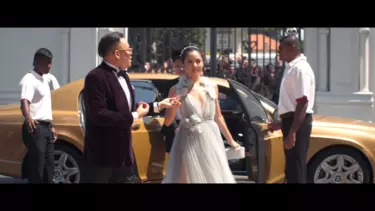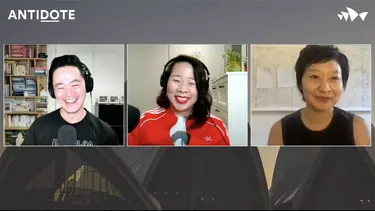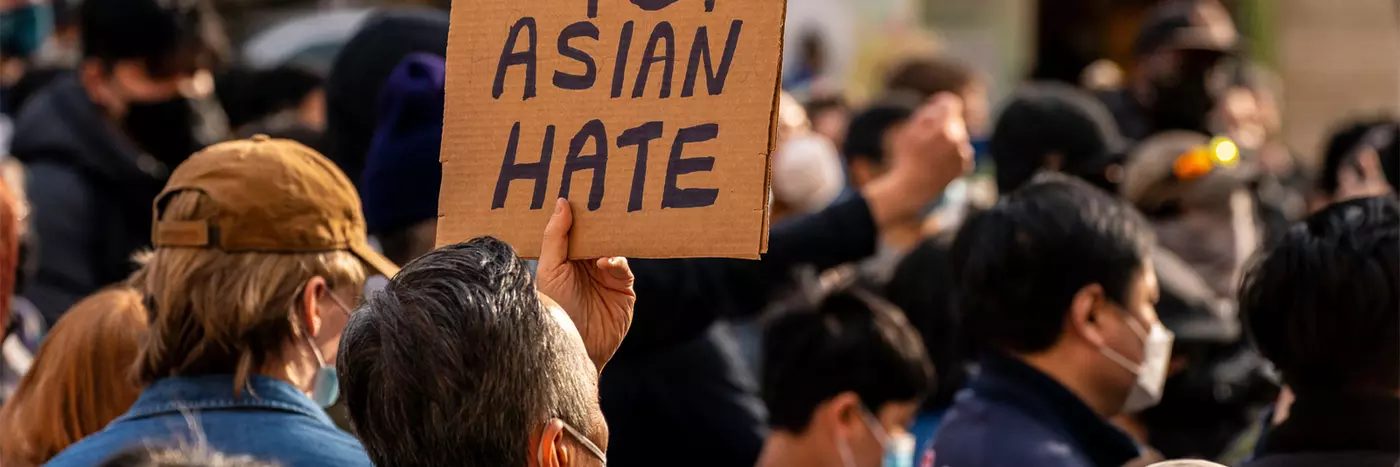Now you see us
On the shortcomings of #StopAsianHate
Recipient of the Antidote and Sweatshop Mentorship for Diverse Emerging Writers Patricia Arcilla writes about the “tidiness” of #StopAsianHate in the face of deeper systemic problems.
In March, a man on the other side of the world has a bad day and kills eight Asian women with a gun. I spend hours doom scrolling, seeking updates, my downward spiral deepening with every swipe of my thumb. On social media, friends and public figures pen grief-stricken statements of solidarity from across the sea, despondent over the eight women with names and faces like theirs—their mother’s, their sister’s, their aunty’s, their friend’s—murdered by a racist.
For a while, this is where the rage and sadness stay: online. I make a plaintive Notes-app Instagram post asking if the shooting is enough for white people in my orbit to “finally believe racism against Asians is real”. I feel better for having said something.
I watch as #StopAsianHate turns from a hashtag into a slogan. Proving our usual omission is due to scarcity not of existence but interest, writers’ festivals urgently assemble panels of Asians. Podcasters follow suit. Between posts highlighting their ‘10 Favourite Asian Creators’ and ‘5 Best Asian-Owned Businesses’, influencers add Minor Feelings to their reading lists and implore their followers to do the same.
The eight women murdered in Atlanta recede slowly into history as Asian celebrities descend from million-dollar homes in the hills to tell rallies they are sick of being left out of conversations about race. Op-eds declare Marvel’s new Asian superhero will be our salvation. Journalists say the pandemic has caused a spike in—if not created—anti-Asian racism. Finally, it’s time to talk about us.
They construct an image of what it means to be Asian in Australia, of what anti-Asian racism looks like, of what liberation from anti-Asian racism looks like and I sympathise—but don’t see myself in the frame.
At the #StopAsianHate rally in Sydney in April, all but one of the speakers are East Asian. They talk about tiger mums and degrading Tinder stereotypes, about school lunches left uneaten and buried at the bottom of school bags, about intense academic pressures and being mocked for the shape of their eyes. They talk, at length, about Crazy Rich Asians as a watershed moment in the fight against racism toward us, declaring “it’s the kind of thing we need more of”. They say racism is personal. Racism is now.
They construct an image of what it means to be Asian in Australia, of what anti-Asian racism looks like, of what liberation from anti-Asian racism looks like and I sympathise—but don’t see myself in the frame. Instead, I think of how in Crazy Rich Asians, all the brown Asians are servants. I think of all the times someone has told me, unprompted, about the FIlipino maid they had growing up in Singapore. Mentally, I draw a Venn diagram of the speakers’ list of racial microaggressions and mine and it looks like the MasterCard logo; I am reminded of the other Asians who have told me that Filipinos “aren’t really Asian”.

I consider how Spanish colonisation and over 370 years of subsequent occupation gave many Filipinos surnames and hometowns in the coloniser’s tongue; how we have quinceañeras in church halls and Santo Niños in our homes; how we feast on adobo, chicharrón and flan. How we—particularly women—are often considered “ethnically ambiguous”, confounding people with our olive skin, our full lips, our round eyes and faces.
I realise I’m at the rally not as an affected community member but an ally: to show solidarity with a specific struggle that I myself have not experienced. I nod emphatically as needed, I thrust my fist in the air at the right moments, and I return home unchanged. Later, I Google ‘Filipinos Asian’ and scroll through pages of ponderous results: ‘Are Filipinos Asian?’, ‘Are Filipinos Asian or Pacific Islanders?’, and ‘Can Filipinos Claim "Pacific Islander?"’.
For months, I observe the movement against anti-Asian hate from a distance. I resent our euphemistic naming of the problem as ‘hate’ rather than ‘racism’, and our hopeful insistence that if people saw more of us on TV, they’d stop knocking down our elders in the street. I wonder if we are too relieved to be having a conversation about Asians at all, and if the relief has blurred our vision of what might come next.

In conversation with Beverley Wang and Benjamin Law at Antidote, Cathy Park Hong talks about history. “How did [Koreans] end up in the US in the first place?” she asks. “Why did we want to leave our country in the first place? What was happening? Yes, my father was very poor—everyone was very poor in Korea after the war—but the question should be not: ‘look how much he’s succeeded since he couldn’t afford to eat’; the question should also be ‘why were so many Koreans so poor at that time?’”
Repeatedly, Hong reminds us that racism toward Asians predates the pandemic. Understanding our history, she says, is how we “acknowledge and dig deep and understand our own traumas”. We go backward to move forward.
When ‘Manilamen’ pearlers arrived in Broome in the early twentieth century it was thanks to a 1916 exemption to the Immigration Restriction Act of 1901 that allowed pearling masters to hire—under indenture contracts—crew and divers from Asia. When the state welcomed ‘New Australian’ migrants from Europe and Great Britain in the aftermath of World War II, Filipinos were amongst the thousands of Asian war-time refugees it moved to deport. In the twenty-first century, Australian mining companies routinely dispossess Indigenous people across the Philippine archipelago and amass fortunes by desecrating their lands; here I am, worrying if I’m Asian enough to be encompassed by a slogan, not knowing what it would change even if I was.
There is an appealing tidiness to #StopAsianHate: a promise in the suggestion that ending racial violence toward Asians is simply a matter of convincing people to dislike us a little less.
There is a certain indulgence in grappling with racism only to the extent that it has personally affected us: the times our accents were mocked, the way our surnames were mispronounced, the undignified memories of our parents being talked down to like infants. We feel better for having said something. But then what? If there is relief to be found in speaking about our pain, surely there is power in pressing for solutions.
At Antidote, Hong seems hesitant to indulge in talking about pop culture and the alluringly neat solutions it purports to offer. “I’m more interested in the kind of story or narrative that’s closer to life,” she muses, “where there is a lot of complexity and ambivalence and where you have to think about all the different issues and many different perspectives, not just right or wrong”.
There is an appealing tidiness to #StopAsianHate: a promise in the suggestion that ending racial violence toward Asians is simply a matter of convincing people to dislike us a little less. This is less daunting than the notion of sabotaging the system of racial oppression as a whole, and it’s a hopeful proposition—but it’s wrong. The purpose of any movement on behalf of people who have been oppressed is to take power that has previously been withheld, not merely to be seen.
Now, as cries to #StopAsianHate begin to fade, we can no longer be satisfied with catharsis. We can no longer settle for simply being seen. Instead, we can pry apart what Hong calls “[an] opening for being comfortable with ambiguity and irresolution”. We can push beyond seeking relief in simply sharing our truth, and probe deeper into those dark, ugly territories, the systems and stories that shaped the hate we see today and the actors who created them; the things that can’t be captured neatly in hashtags and infographics and slogans; the things that don’t make good rally speeches; the things unlikely to ever appear on screen.
